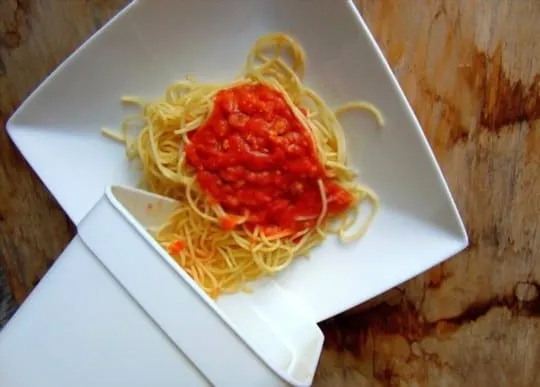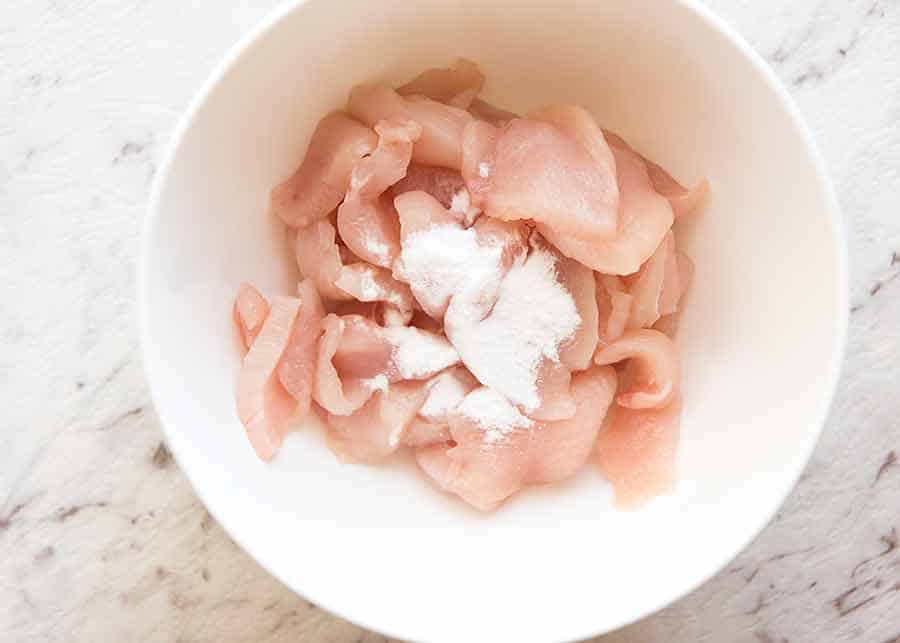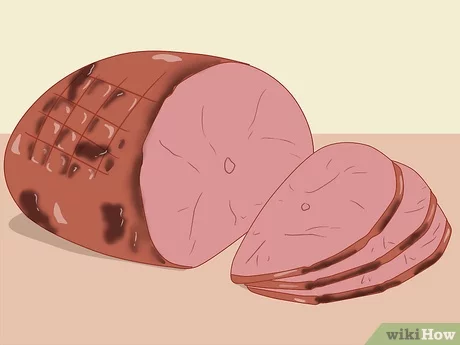There is a common question about whether it is necessary to wash beef liver before cooking. Many people believe that washing liver is necessary to remove toxins or impurities. However, according to experts, the liver is the body’s primary filtration system, and it actually breaks down toxins into less harmful molecules. The liver does hold onto vitamins and minerals, making it a nutrient-dense food. Harvesting and cleaning the liver involves removing it from the animal and checking for any scarring or infections. When it comes to cooking liver, it is recommended to trim off any connective tissue, veins, or ducts to improve the flavor. Soaking liver in milk or saltwater can also help remove any remaining blood and improve the taste. Liver can be cooked in various ways, including searing it quickly or grinding it with other meats. One popular option is to turn the liver into a pate, which can be spread on toast.
Key Takeaways:
- Washing beef liver before cooking is not necessary as the liver acts as the body’s primary filtration system.
- Trimming off connective tissue, veins, and ducts can improve the flavor of cooked liver.
- Soaking liver in milk or saltwater can help remove leftover blood and enhance its taste.
- Liver can be cooked in various ways, such as searing or grinding with other meats.
- One popular option is to turn liver into a pate, which can be enjoyed spread on toast.
The Importance of Cleaning Beef Liver Before Cooking
Properly cleaning beef liver before cooking is essential to ensure the best taste and texture. When you purchase beef liver, it may contain clotted blood and membranes that can impart an unpleasant taste if not removed. To clean beef liver effectively, follow these steps:
- Rinse the liver under running water to remove any visible impurities, such as green parts, fat, or whitish membranes.
- Cut the liver into pieces and soak them in a solution of water and vinegar or milk. This will help remove any remaining blood and impurities.
- After soaking, wash the liver thoroughly and either air-dry it or pat it dry with a kitchen towel before cooking.
By following these simple cleaning steps, you can ensure that your beef liver is free from any unwanted flavors and ready to be cooked.
Table: Steps to Clean Beef Liver Before Cooking
| Steps | Description |
|---|---|
| Rinse | Rinse the liver under running water to remove visible impurities. |
| Soak | Cut liver into pieces and soak them in a solution of water and vinegar or milk to remove remaining blood and impurities. |
| Wash and Dry | Wash the liver thoroughly and either air-dry it or pat it dry with a kitchen towel before cooking. |
Following these cleaning steps will ensure that your beef liver is clean and ready to be transformed into a delicious and nutritious meal.
How to Cook Beef Liver for Tender and Delicious Results
When it comes to cooking beef liver, the key to achieving tender and delicious results lies in the cooking technique. Follow these steps to ensure your beef liver is cooked to perfection:
- Prepare the liver: Start by trimming off any connective tissue, veins, or ducts to improve the flavor. Soaking the liver in milk or saltwater for about 30 minutes can help remove any remaining blood and improve the taste.
- Cook over medium-high heat: Heat a skillet or frying pan over medium-high heat. Once the pan is hot, add a small amount of oil or butter to prevent sticking. Place the liver slices in the pan and cook for approximately 3-5 minutes per side for 1-inch thick slices. Be careful not to overcook the liver, as it can become tough and grainy.
- Check for doneness: To ensure the liver is cooked to the desired doneness, use a meat thermometer to check the internal temperature. The USDA recommends cooking organ meats like liver to a minimum internal temperature of 160°F.
- Rest before serving: Once cooked, remove the liver from the heat and let it rest for a few minutes. This allows the juices to redistribute, resulting in a more tender and flavorful meat.
Incorporating these cooking tips will help you achieve tender and delicious beef liver every time. Remember to pair it with your favorite side dishes or sauces for a complete and flavorful meal.
| Cooking Method | Approximate Cooking Time | Internal Temperature |
|---|---|---|
| Searing | 3-5 minutes per side | 160°F |
| Grinding with other meats | Varies | 160°F |
| Making pate | Varies | 160°F |
The Nutritional Benefits of Eating Beef Liver
Eating beef liver offers a wide range of nutritional benefits that can support overall health and well-being. This organ meat is a fantastic source of protein, providing essential amino acids necessary for muscle growth and repair. In fact, just a 4-ounce serving of beef liver can contain up to 24 grams of protein, making it an excellent option for those looking to increase their protein intake.
In addition to protein, beef liver is rich in vitamins and minerals that play crucial roles in various bodily functions. It is particularly high in vitamin A, which is essential for healthy vision, immune function, and cell growth and development. A single serving of beef liver can often meet or exceed the daily recommended intake of vitamin A.
Furthermore, beef liver is a great source of iron, a mineral necessary for the production of red blood cells and the prevention of iron-deficiency anemia. It also contains other important minerals such as potassium, phosphorus, and copper, which contribute to proper nerve function, bone health, and the formation of red blood cells.
| Nutrient | Amount per 4 oz (113g) Serving |
|---|---|
| Protein | 24 grams |
| Vitamin A | 28,000 IU (International Units) |
| Iron | 7.5 mg |
| Potassium | 407 mg |
| Phosphorus | 330 mg |
| Copper | 9.5 mg |
When incorporating beef liver into your diet, it is essential to choose high-quality, organic sources to ensure the least exposure to potential toxins or hormones. It is also important to consume liver in moderation due to its high vitamin A content, as excessive intake can be harmful. Overall, adding beef liver to your meals can provide a nutritional boost and help you meet your daily recommended intake of essential vitamins and minerals.
Tips for Cooking and Serving Beef Liver
When it comes to cooking and serving beef liver, there are a few key tips to keep in mind. These tips will help you achieve the best flavor and texture, ensuring a delicious and satisfying meal. Whether you’re a seasoned cook or a beginner in the kitchen, these tips will help you create a memorable dish using beef liver.
Properly Clean the Liver
Before cooking beef liver, it’s important to properly clean it. Rinse the liver under running water and remove any visible green parts, fat, or whitish membranes. Cutting the liver into pieces and soaking them in a solution of water and vinegar or milk can help remove any remaining blood and impurities. After soaking, wash the liver thoroughly and pat it dry with a kitchen towel before cooking. This step ensures that the liver is clean and ready to be prepared.
Soak the Liver for Improved Flavor
Soaking the liver in milk or a vinegar solution before cooking can help remove any bitterness and enhance the flavor. This step is particularly useful if you find the taste of liver to be slightly off-putting. Simply place the liver in a bowl and cover it with milk or a mixture of vinegar and water. Let it soak for 30 minutes to an hour, then rinse it off and proceed with your chosen cooking method. You’ll be pleasantly surprised by the improved taste and tenderness of the liver.
Cook Over Medium Heat and Add Flavors
When cooking beef liver, it’s best to use medium heat to prevent it from becoming dry or tough. Overcooking liver can result in a grainy texture and loss of flavor. Aim to cook the liver for approximately 3-5 minutes per side if the slices are 1 inch thick. To enhance the flavor, consider adding onions or other aromatic ingredients to the pan. The onions will not only add depth to the taste but also complement the rich flavor of the liver.
When it comes to serving beef liver, there are endless possibilities. It pairs well with a variety of side dishes such as roasted potatoes, mashed potatoes, sautéed vegetables, or a fresh salad. You can also top it with sauces like vegetable gravy or mushroom cream sauce for an extra flavor boost. Get creative and experiment with different flavors and combinations to find your favorite way to enjoy beef liver.
Conclusion: Cooking Beef Liver Made Easy and Delicious
In conclusion, cooking beef liver may initially seem daunting, but with the right techniques and tips, it can be an easy and delicious endeavor. The first step to ensure a great-tasting liver is to properly clean it before cooking. By rinsing it under running water and removing any visible green parts, fat, or whitish membranes, you can eliminate any unwanted flavors.
Soaking the liver in milk or a vinegar solution is another key step to enhance the taste and remove any potential bitterness. This pre-cooking process helps tenderize the meat and improve its overall flavor profile. By following these cleaning and soaking techniques, you can ensure that your beef liver is well-prepared for cooking.
Cooking the beef liver over medium heat is crucial to achieving tender and delicious results. It is recommended to cook the liver for approximately 3-5 minutes per side, depending on its thickness. Taking care not to overcook the liver is important, as it may result in a tough and grainy texture. Remember, the liver is best when cooked just until it is pink inside and soft.
By following these easy steps and implementing the tips provided throughout this article, you can confidently cook beef liver and enjoy its many benefits. From its high protein content to its abundance of essential vitamins and minerals, beef liver is a nutrient-dense food that can support overall health. So don’t hesitate to give it a try – you might discover a new favorite dish that is both easy to prepare and incredibly delicious!
FAQ
Do I need to wash beef liver before cooking?
Yes, it is recommended to wash beef liver before cooking to remove any impurities and ensure the best taste and texture.
How should I clean beef liver before cooking?
To clean beef liver, rinse it under running water and remove any visible green parts, fat, or whitish membranes. Soaking the liver in a solution of water and vinegar or milk can help remove any remaining blood and impurities.
How do I cook beef liver to achieve tender results?
It is recommended to cook beef liver over medium-high heat for approximately 3-5 minutes per side if the slices are 1 inch thick. Be cautious not to overcook it, as it can result in a tough and grainy texture.
What are the nutritional benefits of eating beef liver?
Beef liver is a great source of protein, iron, vitamin B12, and minerals. It also contains vitamin A, vitamin C, potassium, phosphorus, and copper. Different types of liver may have varying nutrition content.
What are some tips for cooking and serving beef liver?
Tips for cooking beef liver include removing any connective tissue, washing it thoroughly before cooking, and adding onions or other flavors for extra taste. Leftover cooked beef liver can be stored in the fridge for up to 3 days and can be paired with various side dishes or sauces for serving.
How can I make cooking beef liver easy and delicious?
By properly cleaning the liver before cooking, soaking it in milk or a vinegar solution to remove bitterness, and following the recommended cooking techniques, you can confidently cook beef liver and enjoy its many benefits.




